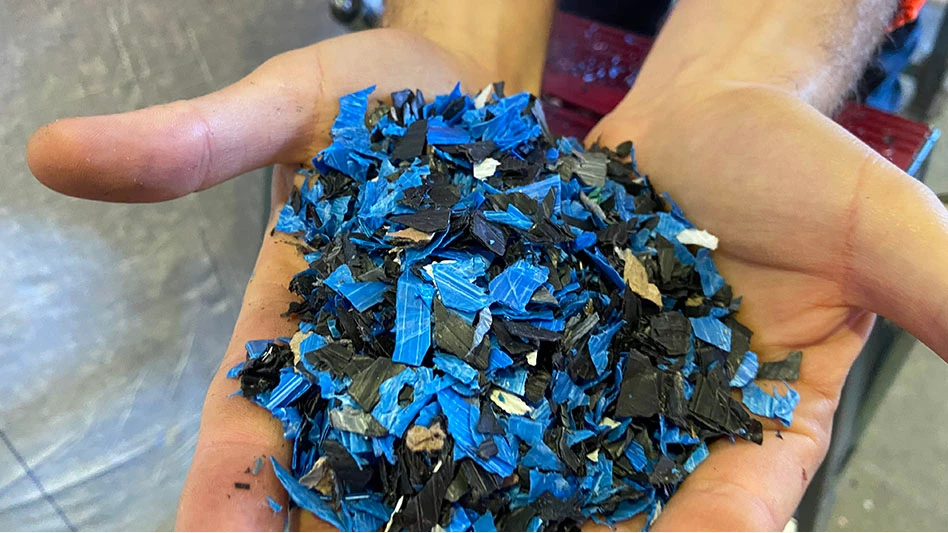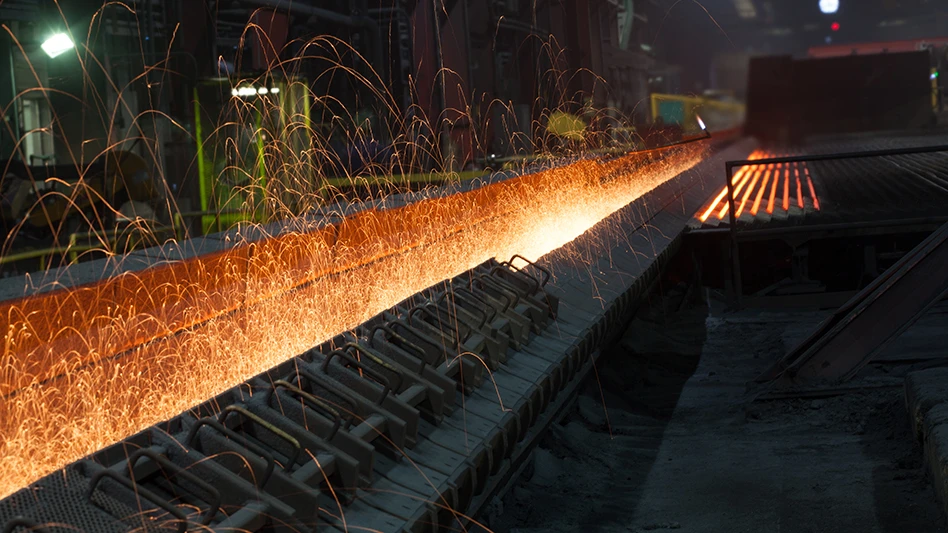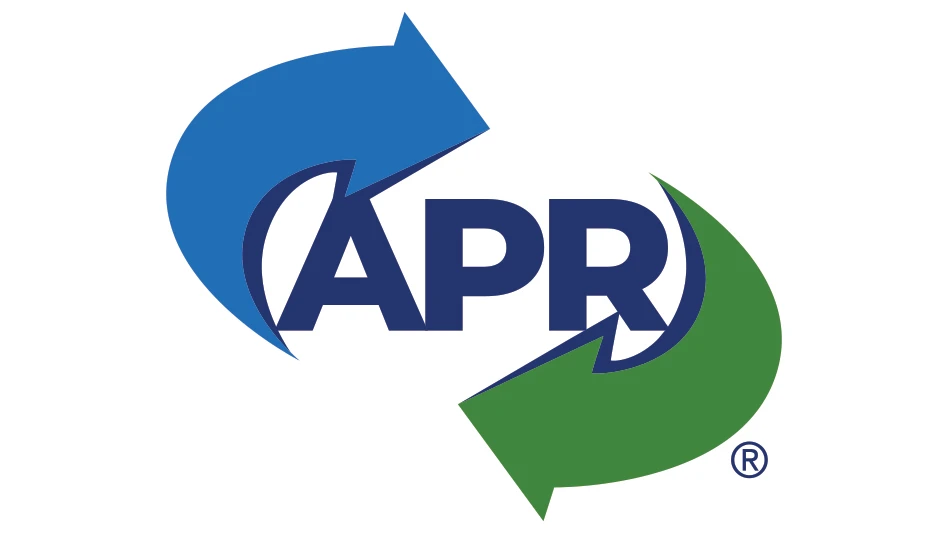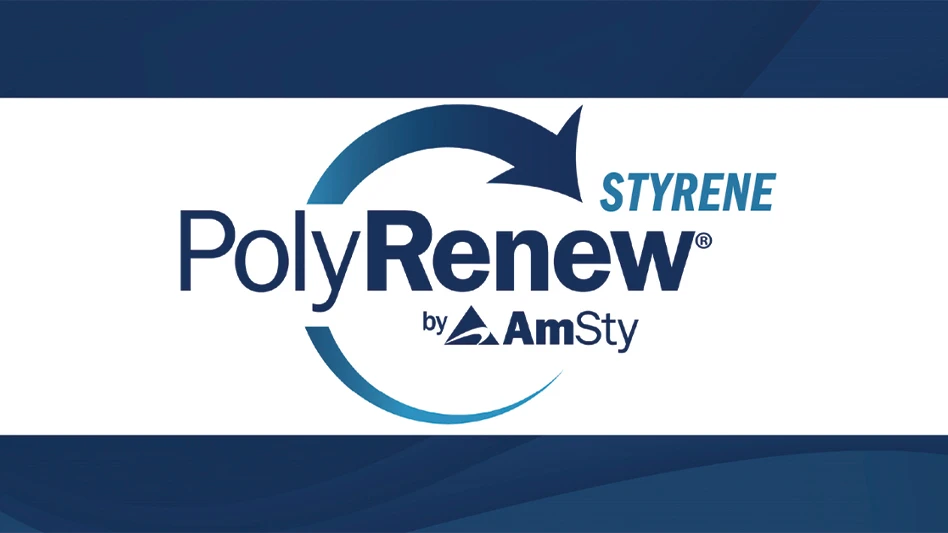Abitibi Consolidated is a global company with facilities in Canada, the United States and the U.K. We have 12,500 employees, 19 mills, 20 saw mills and four remanufacturing facilities. We also have engineered wood facilities and 30 recycling operation locations, including the operations that we have in the U.K.
We supply products in more than 70 countries and are among the largest recyclers of newspapers and magazines in North America. We have three pillars of the sustainability effort that we practice as a company: environmental responsibility, social desirability and economic viability.
Environmental responsibility is where product recycling and resource use and reuse come into play for us as a company.
On social desirability, working through the programs we have either in forestry or products or in recyclables or paper recycling, we also have this component that touches on economic contributions to the communities and people that we work with.
As far as economic viability—financial viability is related to fiber. Fiber pricing, fiber availability, fiber quality is part of what makes a remanufacturing facility viable in today’s market. So does competitiveness, because to be competitive, we need to have access to that fiber and we need to make sure that we respond to that demand out there by our customers in various finished product lines to have recycled content—because it is out there. Customers and consumers are asking for recycled content in the products we manufacture.
FULL CIRCLEIn fact, when you look at it, as a full-circle recycler, which is a trademark we’ve had for a number of years, we do have a certain amount of recycled content in a number of our facilities. Our use of recycled content goes from 6 percent in our Baie-Comeau, Quebec, facility that consumes mostly OMG (old magazines) or fly leaf coated sections to 100 percent recycled newsprint at three of our flagship mills, Bridgewater in the U.K., Snowflake in Arizona and Thorold in Ontario.
When we say we are a leader in recycled fiber use, this gives you an idea of where we fit in North America. The total number here is 6.5 million tons of recycled paper consumption in the newsprint, printing and writing grades. That’s how we segment ourselves in the industry. Abitibi Consolidated Inc. is at 1.7 million tons, Bowater is at 1.1 million tons and SP is at 1 million tons. Those are the three major players in the industry in North America for newsprint and printing and writing grades.
We do have a program (the Abitibi Paper Retriever program) that is very much educational in nature and helps us source fiber, but we also believe it helps us get our hands on fiber that would not otherwise be there. In a nutshell, we believe that fiber is not stolen from anybody else where we have our Paper Retriever program running, but rather helps increase recycling rates in the 19 cities using the program. The educational component is very important to us; that’s part of our community responsibility and part of our social responsibility as a finished product producer.
GLOBAL PICTURELet’s look quickly at the global newsprint industry. When you think about it, you need to think about advertising and circulation because that’s where it all starts.
Newspaper’s portion of the advertising dollars has been going down slightly worldwide, while ad spending has been going up in general. That is no surprise; there is competition by electronic media, there is competition worldwide by the Internet, and other mediums such as television are also taking their share. But daily newspaper circulation is increasing. It is mostly increasing in China, Japan and India, three countries that are growing like crazy and are generating a new middle class that is asking for information and asking for a medium that is called a newspaper.
While newspapers may lose their share of advertising dollars and newspaper circulation increases in the developing nations of China and India, we are also seeing the growth of free dailies, a growing vehicle for transmitting information to people worldwide. In North America, free dailies account for about 6 percent of the daily newspaper circulation. In Europe, they account for about 12 percent. In Europe they’ve gone way over where we are in North America in terms of free daily subscriptions.
Newsprint demand is forecasted to increase by 0.1 to 1.1 percent in 2008, and, no surprise again, Eastern Europe, Latin America and China are where the increase in newsprint demand is going to occur.
As far as North America is concerned, we’ve seen declines of 4 percent last year [and] 6 percent in 2005 in newsprint demand. The most recent forecast by the Pulp and Paper Institute in Canada predicts a decrease of 5 percent in newsprint demand for 2007. However, I can tell you the rate of decline for the first three or four months of this year has been far larger than that; it has been in and around 12 to 13 percent.
Newsprint capacity is going up, and it’s gone up mostly in China. We also have global shipment to capacity ratios that are between 88 percent and 95 percent, which means the industry is producing at a healthy rate around the world and the prices are right were they are supposed to be for companies to keep making money in this industry.
China’s capacity has just been booming from 2005 and is forecast to keep going until 2008. Companies in China have been building a lot of machines and a lot of newsprint production capacity in order to meet the potential requirements related to the ’08 Olympics. In the meantime, they have overcapacity and they have products on their hands. As these new mills start up, they need fiber in order to perform trials on the equipment and work with their suppliers and the equipment manufacturers to fine-tune their production lines. No wonder they are running at higher operating rates these days.
Because they are producing more newsprint than they actually consume, they have to export some of it. China will export approximately 60,000 tons during the third quarter of ’07, according to forecasts. Most of those tons are exported in a basin in and around China—mostly Hong Kong, India, Malaysia and a certain amount in North Africa. North American newsprint consumers are importing hundreds of tons of this material for trial runs.
HOME FRONTNewspaper circulation in North America has been posting declines. [Average weekday circulation fell 2.5 percent in the six months ending March 31, 2006, compared to the same period ending 2005, according to a Newspaper Association of America (NAA) analysis of Audit Bureau of Circulations data from 770 dailies. Sunday circulation fell 3.1 percent at the 610 reporting newspapers.] But newspapers all in all are nevertheless remaining a relevant medium for circulating information. The type of information, however, is changing.
A boom in free newspaper circulation is also occurring right now. There are 4 million copies of free dailies per day in circulation in North America. There are 34 free daily titles in the United States, and the segment represents 7 percent of newspaper’s daily circulation. This is a growth market for publishers and commercial printers. You can see in Europe, for example, that the free daily market is currently about 15 percent of its daily newspaper circulation number. There’s still a lot of room to grow and a lot of room to print on newsprint to make sure we circulate news around the world.
As I mentioned earlier, consumption has been declining fairly heavily in light of weak national and recruitment advertising and decreasing ad linage, but there have been some cost conservation measures taken by newsprint consumers and producers.
As you know, just about in any industry, as prices go up, people find ways to save money. In the newspaper industry, companies save money by cutting down on the size of the newspaper as well as the weight of the newspaper, which we call the basis weight. So, it’s a thinner paper in a lot of instances that you have in your hands when you read it in the morning.
LOOKING AHEADWhile the newsprint industry is changing, the recycled fiber and newsprint industries, in my view, are a very positive story. If you have a look at recovered volume, North America recovered 57 million tons in 2006. When we look at the demand forecast for 2011, North America is going to have to recover close to 63 million tons of fiber in order to satisfy that demand. That will demand that people go out there and help increase recycling rates in North America to make sure we have the material available.
Also, if you think about paper only, in 2005, 2006 and 2007, roughly 91 million tons of paper were manufactured. That figure remains unchanged despite the fact that newsprint consumption and production are going down. Why? Because some other grades are going up. I know that as a company, within Abitibi Consolidated, while we may be selling less newsprint, we’re selling more high brights, more magazine and more coated material, and that’s because that’s what the printers—the end market—is asking for. In 2005, we had about 10 million tons of consumption of newsprint and newspapers, and you can see we were recycling pretty close to 7 million tons, so it’s a fairly well served market.
But the 7 million recovered tons versus the 10 million available tons indicates that there’s still room to recover some of the newsprint in circulation out there through curbside programs or commercial programs.
Containerboard is also a very well served market. No doubt as demand and supply are getting closer and closer together there are stronger pressures, and the last tons you need to get in the containerboard market are getting more expensive. In the middle, between other mixed printing and writing papers, there is still room to grow and a lot of material available out there to be recovered and supplied to the right end user.
Recovery does not drive recycling, it is simply a means to an end. It is the ability to use the recovered raw material in the manufacture of new products that is the key driver. Nobody makes a buck if it can’t be remanufactured into something else. And there’s going to be more pressure as we’re moving forward to make sure we get the right quality material to the right user. And as a recycler, you want to make sure you get every can of aluminum you can out of that stream, because it is worth $2,100 per ton. So I think technology will have to be a driver of the changes in the recycling industry as were moving forward until we get this message across to a number of people.
The challenges for those of us linked to the recycling industry and for those that use recovered fiber in the manufacture of new products in the next five years are going to be related to availability, cost and quality: the availability of the fiber close to the manufacturing sites we operate and a decent cost for decent quality. I keep saying we’re ready to pay for the fiber, but there are limits to what you can accept in a manufacturing establishment because you will run those manufacturing establishments out of business if they have to process material that is from 2 to 7 percent glass.
I was recently at another conference where a representative from one mill, that was neither Abitibi nor Bowater, was in a public session saying the company in question consumed 250,000 tons of recyclable material, including newsprint and OMG, and the processing costs at the mill level had gone up by $2.5 million in the last three, four years just because of more and more single-stream material coming into play. I think technology is there for us, to help us do a better job making sure the right material, whether it’s paper, glass cans, textiles, plastic and green waste get to the right end user and get to the right end user in as clean a form as possible. Increasingly, quality is going to become a topic of conversation between suppliers and customers.
The author is vice president of recycling operations, North America, for Montreal-based Abitibi Consolidated.
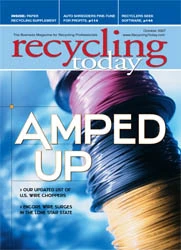
Explore the October 2007 Issue
Check out more from this issue and find your next story to read.
Latest from Recycling Today
- AF&PA report shows decrease in packaging paper shipments
- GreenMantra names new CEO
- Agilyx says Styrenyx technology reduces carbon footprint in styrene production
- SABIC’s Trucircle PE used for greenhouse roofing
- Hydro to add wire rod casthouse in Norway
- Hindalco to invest in copper, aluminum business in India
- Recycled steel price crosses $500 per ton threshold
- Smithers report looks at PCR plastic’s near-term prospects
